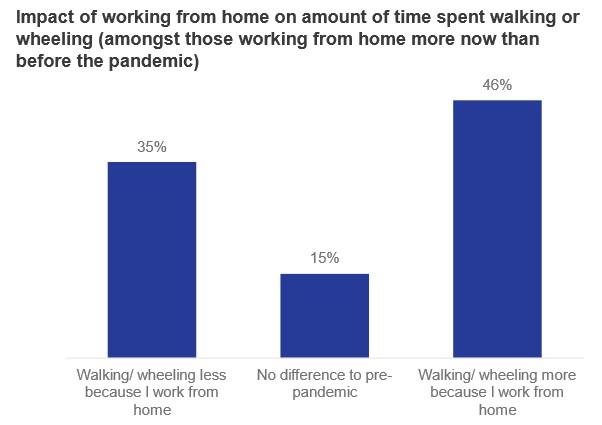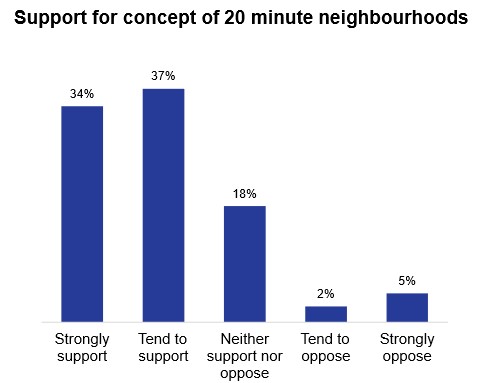We’ve recently released our 2023 attitudes survey results, offering a fantastic glimpse into how people think and behave when it comes to getting around on foot or by wheelchair in Scotland.
The research conducted by 56 Degree Insight surveyed 1,000 adults online. This survey updates information previously collected in 2009, 2014, and 2019.
Let’s delve into some of the key findings:
What did we find out?
How often, why and where Scots walk and wheel
Walking is on the rise! Most people are walking or wheeling regularly. 85% are doing so either every day or several times a week. This is a slight increase from 81% in 2019.
Age matters: Overall, 52% of people are walking every day, for those under 45 this rises to 69%, but falls to 39% for those over 65
Leisure and exercise lead the way: The most common reason people are walking or wheeling frequently is for leisure or exercise (59%), with local shops and green spaces the top destinations (44% and 35% respectively).
Countryside is calling: Most walking takes place in urban places, but more people are walking in countryside and coastal locations since 2019, up from 55% to 77%.
Health benefits are recognised: A huge 84% agreed they enjoy walking for health, 80% for relaxation, and 77% for clearing their heads and improving concentration.
How COVID and lockdown periods have affected walking and wheeling behaviour
Walking is up and down: Over a third of the population (38%) walk or wheel more now than they did before the pandemic, and 19% are walking less
Work from home, walk more: Around a quarter of the working population are working more from home now, with 46% of them saying this has led them to walk more often.

What could encourage people to walk or wheel more often
Scots want to walk more: 69% and 60% desire increased walking for leisure and routine purposes, respectively.
Encouragements: feeling safer at night (34%), pavements being of a better quality (32%) and someone to walk with (31%) were top of the list.
How people walk and wheel on journeys to shops, services, work and study
Walking and daily life: For over 80% of people, public transport, shops that sell essentials, and green spaces are within a distance they are prepared to walk.
Work commutes: Only around a third would walk the distance to get to their place of work.
Train takes the lead: For people who walk to public transport links, getting to the train is the most common reason they last did this, increasing from 44% in 2019 to 51% this year.
Experiences and expectations for walking and wheeling in local areas
Local area issues: Litter, dog poo (60%), cyclists on pavements (47%), poorly maintained pavements (47%) and cars parked on pavements (46%) were the biggest bugbears. The percentages reporting these issues has increased since 2019.
Walkable neighbourhoods preferred: In the scenario of moving house, path networks and being able to walk to shops and public transport are important to more people than being able drive to towns and retail parks.
Important local features: people highly rated the importance of feeling safe, having well cared for streets and public areas that are appealing to spend time in, good quality green spaces and shops that sell essentials within easy walking distance.
Healthy neighbourhoods: Around 7 in 10 Scots support the concept of ’20 minute neighbourhoods’ where everyday needs can be met by a short walk or wheel from their home.

What next/what does this mean?
Paths for All plans to explore these findings further, with implications for:
- Funding for behaviour change projects that support people to walk more
- Footpath creation and maintenance
- Outdoor recreation
- Safety improvements
- Addressing pavement parking concerns and supporting enforcement of the new legislation
- Promoting 20 minute neighbourhoods and the high levels of support for them
- Ensuring planning and housing align with people's preferences for walkable communities
- Strengthening links between walking and public transport
This survey paints a clear picture of Scots increasingly embracing walking and seeking walkable communities. Paths for All's future work will undoubtedly be shaped by these insights, paving the way for a Scotland where getting around on foot or by wheelchair is safe, convenient, and enjoyable for all.
Check out the full report
Check out the infographic of some highlight statistics


